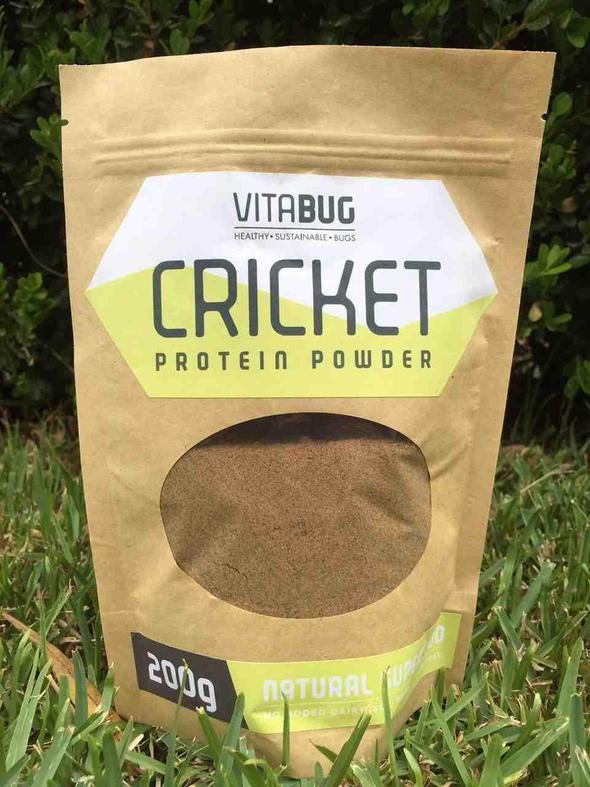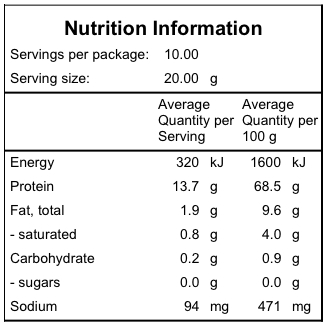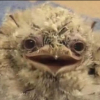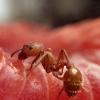Thanks! I read the threads and downloaded most of the papers mentioned in them.
I spent the last half hour or more writing a response on my phone only to get engrossed in what was going on on the tv and pressing "back" while not looking, lost it all, no autosave when using the phone! (this happens to me a lot!)
I read all your responses, I accept that not all of the flour would be soluble and that the ants cannot swallow the particles. We discussed a fortified sugar water in another thread recently after which I was quite convinced that protein and carbohydrates should be made available through separate sources. I was not thinking of a liquid food with protein to meet the protein needs of the adults, or an all in one liquid or gel food but rather a protein rich food that they would bring back to feed the larvae.
In your response you say that ants will not recognise the amino acids as a source of protein for the larvae, and you state that most ants find insect meals/flours unpalatable, both reasons why the adults are not likely to take it back to feed the larvae. I was thinking ants would like the meal even straight from the packet but I'm quite prepared to take your word for it that they likely won't.
So a liquid is out, although it would be interesting to know what parts of the flour are soluble and if you removed the suspended insoluble particles would the resulting solution be of value, but that requires a lot more research and we don't really need a liquid protein food anyway, we need something for the adults to bring back to feed the larvae.
So some questions are -
Without adding a large amount of simple carbohydrates (sugars) can a suitable high protein food source be made based on insect meal?
What would make it acceptable to the adult ants other than adding sugars?
Can it be mixed with other sources of amino acids that ants do recognise as protein to make it acceptable?
I have some ideas of things that might be tried, I do still like the idea of a dry mix incorporating gelatin powder so small batches can be made as needed simply by adding hot water, the resulting gel would need to be stiff enough that small pieces can be carried back to the larvae, but what dry food could be added to make it acceptable to the adults?
Of course a jelly could be made using wet additives to make it palatable, things that come to mind are blending in frozen bloodworms (my ants liked them straight away), maybe even blood could be used. Catfood might be an option, most ants seem to like it, the insect flour and gelatin would take the protein from approx 8% to perhaps well over 50% depending on the mix ratios. Gelatin at the strength required might be sticky enough to pose a danger though.
Because it's a flour biscuits or a heavy cake might work, think biscuits as known in Australia or the UK, not sweet crumbly cookie type biscuits but the hard biscuits such as Arrowroot or Milk Biscuits. Arrowroot flour is often used to make animal food to avoid the problems associated with wheat flour*, it could be added if needed to make a baked product, as could egg but I haven't read the paper I downloaded regarding ants fed on egg yet, the protein would not particularly be needed but it could help as a binder.
To sum up, the goal is not to make a "replacement diet" type food, just to have a protein source product that is always on hand and can be used as part of a varied diet, just as people might have sugar or honey water ( or Sunburst) on hand but still offer a variety of other sources of sugar as well.
I guess the best thing to do besides reading up is to buy some powder and experiment, failed experiments could be given to the lizards or fish (I've been making frozen foods for them for 30+ yrs) or even the dogs or chickens, plenty of mouths around here! Maybe I could even make something for the dermestid beetles that doesn't stink like meat does!
Thanks for your (past) insights drtrmiller, I know you've looked very deeply into ant nutrition over the years. 
* A side thought, when I kept birds I would make a "bird cake" to help with rearing the young, blending millet and other small grains to make flour, sometimes adding Arrowroot or Rice flour, never wheat flour. Perhaps something similar could be made for grain eating ants?
























